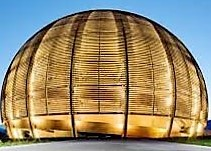Speaker
Description
Neutron-induced reactions are essential to the nucleosynthesis of the elements heavier than iron. Recent studies show that key (n,p) reactions, such as the $^{56}$Ni(n,p)$^{56}$Co and $^{64}$Ge(n,p)$^{64}$Ga, accelerate the so-called neutrino-p process ($\nu$p-process), enabling the process to create heavy elements between nickel (Ni) and tin (Sn) in type II Supernovae. The $\nu$p-process occurs in slightly proton-rich regions in the neutrino driven wind of core-collapse supernovae, via a sequence of proton-capture reactions and (n,p) reactions. The small abundance of neutrons that drives the (n,p) reactions originates from anti-neutrino captures on free protons.
The study of such (n,p) reactions is achievable via the measurement of the reverse (p,n) reactions. While such proton-induced reaction measurements are particularly challenging, as the recoils and the unreacted projectiles have nearly identical masses, an appropriate separation level can still be achieved by SECAR, the SEparator for CApture Reactions at FRIB. In a recent experiment, the first direct measurement of the p($^{58}$Fe,n)$^{58}$Co reaction was possible by the in-coincidence detection of the recoil $^{58}$Co at the end of SECAR and the emitted neutrons near the SECAR target/entrance. As the $^{58}$Fe(p,n)$^{58}$Co reaction has been measured in the past only via the activation method, this direct measurement is expected to improve the cross-section data available, especially for energies close to the Coulomb barrier, and to pave the path for many other (p,n) reaction measurements of great astrophysical interest with low abundance isotope - as is the case for the $^{58}$Fe, or radioactive beams. In this talk, some preliminary results of the aforementioned experiment, along with the experimental details for the (p,n) reaction study with SECAR, will be discussed.
